Some of the links in this post may be affiliate links.
Few garden plants are as versatile as impatiens plants. They come in a wide variety of colors, and new varieties have been developed that will even thrive in full sun. They are no longer just plants for shade or partial shade!
I’ve been growing impatiens in pots for many years, and I’d like to share with you all my top tips so that your pots are the envy of everyone visiting your garden.
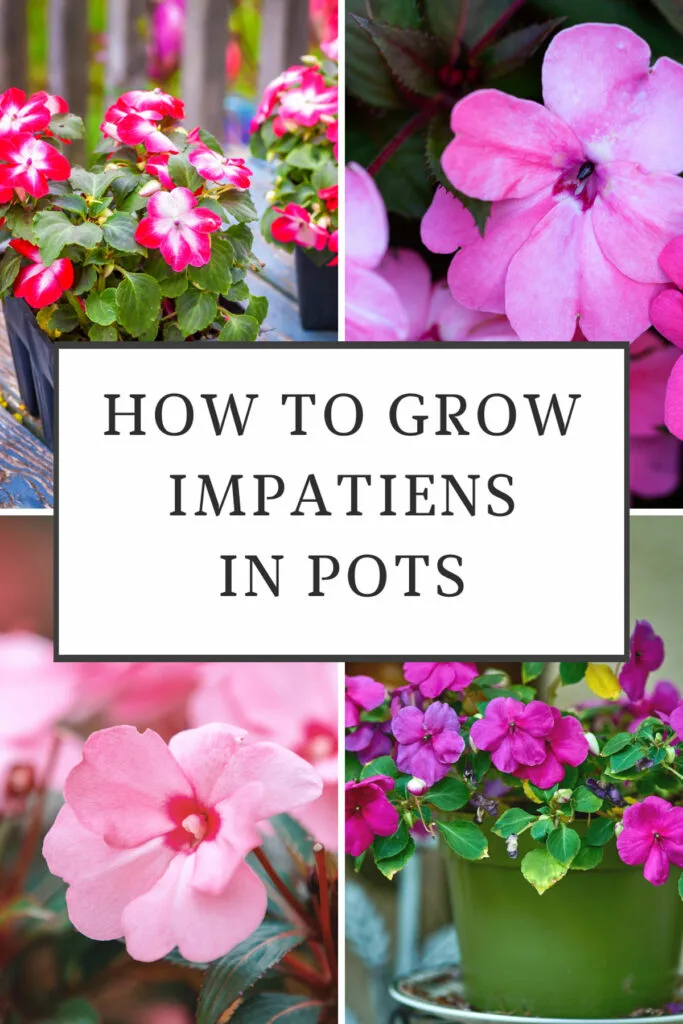
Impatiens flowers come in white, pink, orange, salmon, red, purple, and more, and will bloom for the entire growing season. They even come as double flowers as well.
Impatiens sometimes go by the common name, Busy Lizzie. They’re great for window boxes, hanging baskets, planted on their own in a pot, or even mixed with other annual plants.
Table of Contents
HOW TO GROW IMPATIENS IN POTS
1. LIGHT
There is an impatiens variety for every light level. Here are three different types of impatiens that you can plant, depending on what kind of light you’re going to place your pots in.
Standard Bedding Impatiens
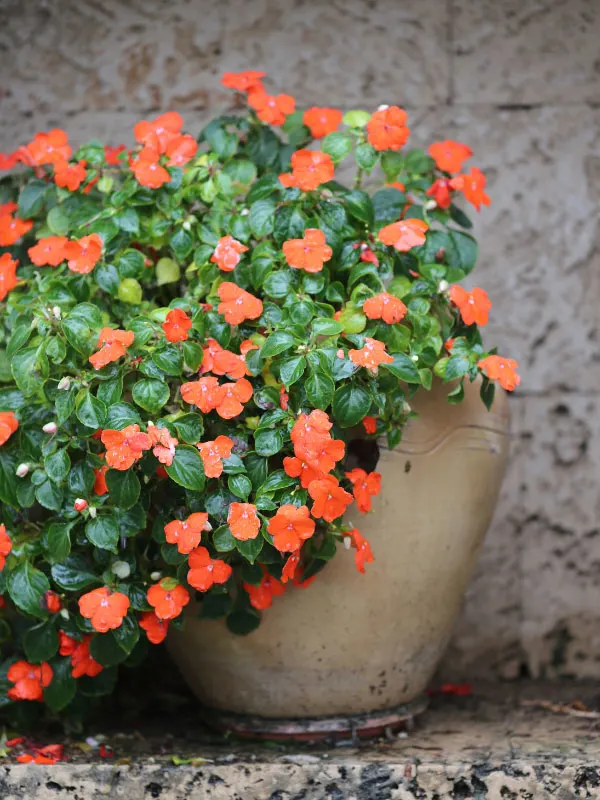
Most of us are familiar with the standard bedding impatiens (Impatiens walleriana) that are typically sold in flats, but they shouldn’t be limited to just flower beds. They are great candidates for pots as well.
These are best for full shade to partial shade (up to about half day of sun or so). Morning sun and afternoon shade would suit these plants well.
Flowering will be reduced in deep shade, but they will still grow and give you some flowers in full shade in most cases. If you are looking for other plants that grow well in shade, check out my post on the best shade plants for your front porch.
Of the 3 varieties in this post, these do the best in shadier areas, but a couple hours of direct sun would still benefit them, particularly for increased flowering.
New Guinea Impatiens
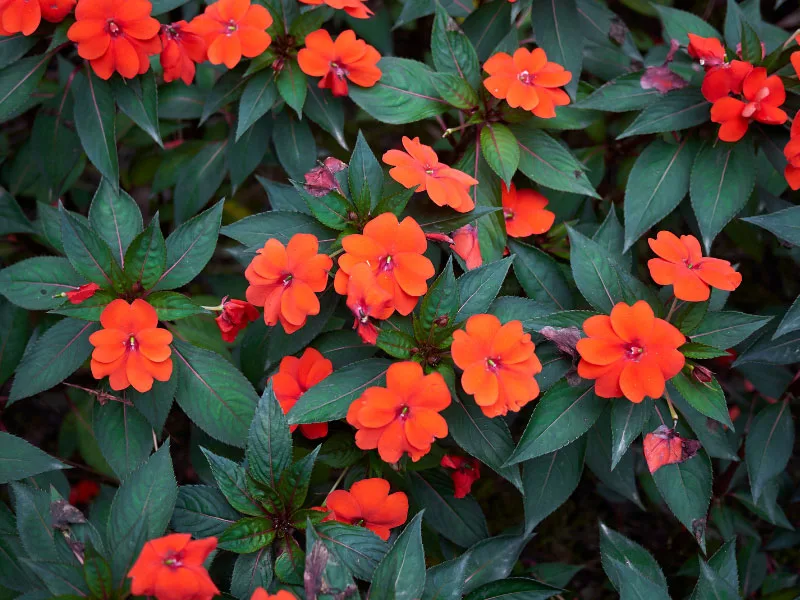
There are also what are called New Guinea impatiens (Impatiens hawkeri) which have larger leaves and flowers than the standard bedding impatiens.
They are named New Guinea impatiens because they were discovered in Papua New Guinea in 1884.
These plants do best with 2-4 hours of sun a day, particularly morning sun or late afternoon sun.
New Guinea impatiens have an added bonus of being more resistant to downy mildew disease, compared to the plain old bedding impatiens.
SunPatiens
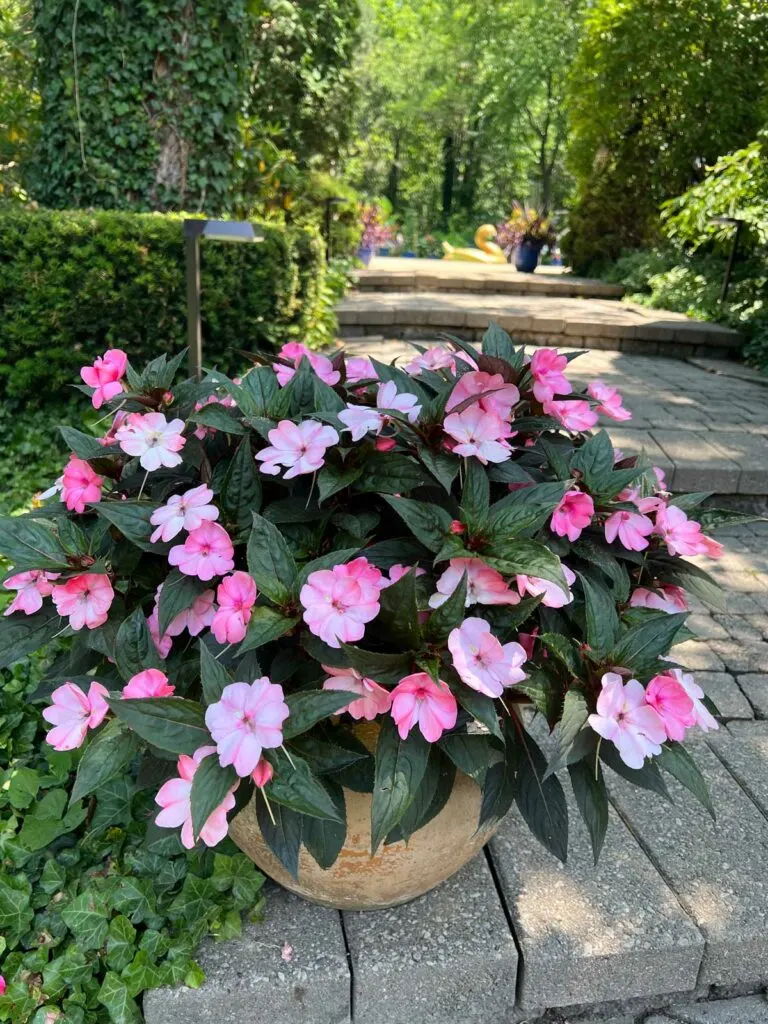
The SunPatiens series has been developed by Sakata Seed of Japan and they are a cross between New Guinea impatiens and wild impatiens.
They have been specifically developed to not only grow, but thrive in full sun, and even in climates with hot weather and humid conditions.
They also have larger leaves and flowers than standard bedding impatiens.
So if you love impatiens, but have nothing but direct sunlight all day, SunPatiens are perfect for you! As long as you keep them well-watered, but we will get to that later in this post.
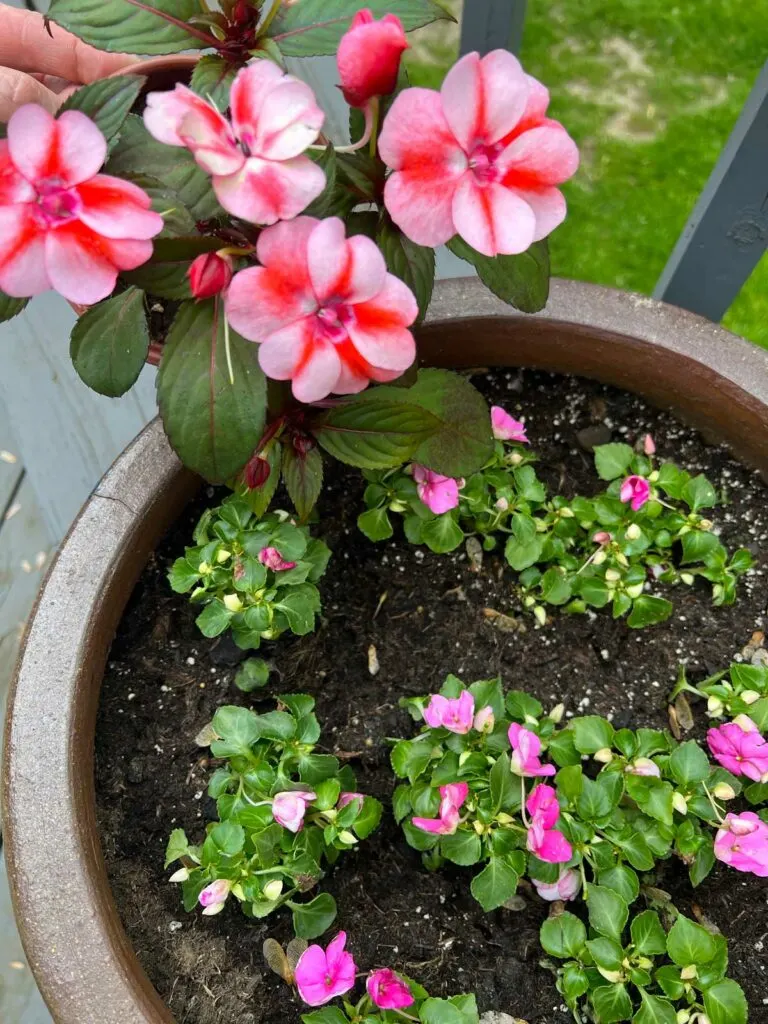
2. SOIL & POT TYPE
POTTING SOIL
You can really use any well-draining soil meant for container gardening, but my favorite to use for outdoor impatiens pots is Miracle-Gro Moisture Control Potting Mix (link to Amazon).
It uses sphagnum peat moss, coir, as well as a wetting agent which absorbs up to 1/3 more water than potting mixes without it.
Because impatiens need a moist soil to thrive, this mix is excellent. It also contains fertilizer which will start your plants off on the right foot.
One thing to be aware of though. When you pot up your plants and use the mix for the first time out of the bag, it may take a couple waterings in a row to help moisten the potting mix.
Sometimes the mixes are so dry in the bag that you’ll have to work at it a bit. So be patient.
BEST POT TYPE
It’s largely personal preference as far as what pot type you use, as there are pros and cons to the various types.
My main recommendation is to just avoid using terra cotta pots if you can, particularly small ones as they dry out extremely quickly and would require much too frequent watering.
Larger terra cotta pots would be fine since the larger volume of soil will take longer to dry out. Terra cotta pots by themselves are actually great, as long as you can keep up with the watering.
It just creates more of a maintenance issue and can be counterproductive for moisture-loving plants like impatiens, but in the end, it’s a personal decision.
Any non-porous pot type, such as glazed ceramic, resin pots, plastic pots, etc. would be good choices as long as they have drainage holes so that excess water can drain away. Good drainage is essential.
You can always drill holes in any pots that don’t. have drainage holes.
You may want to avoid small pots in general as they may be too hard to keep up with watering.
POTTING UP
When you pot up your impatiens, be sure to loosen the root ball a little before planting them. Often times, the plants are pretty root bound in their trays or pots.
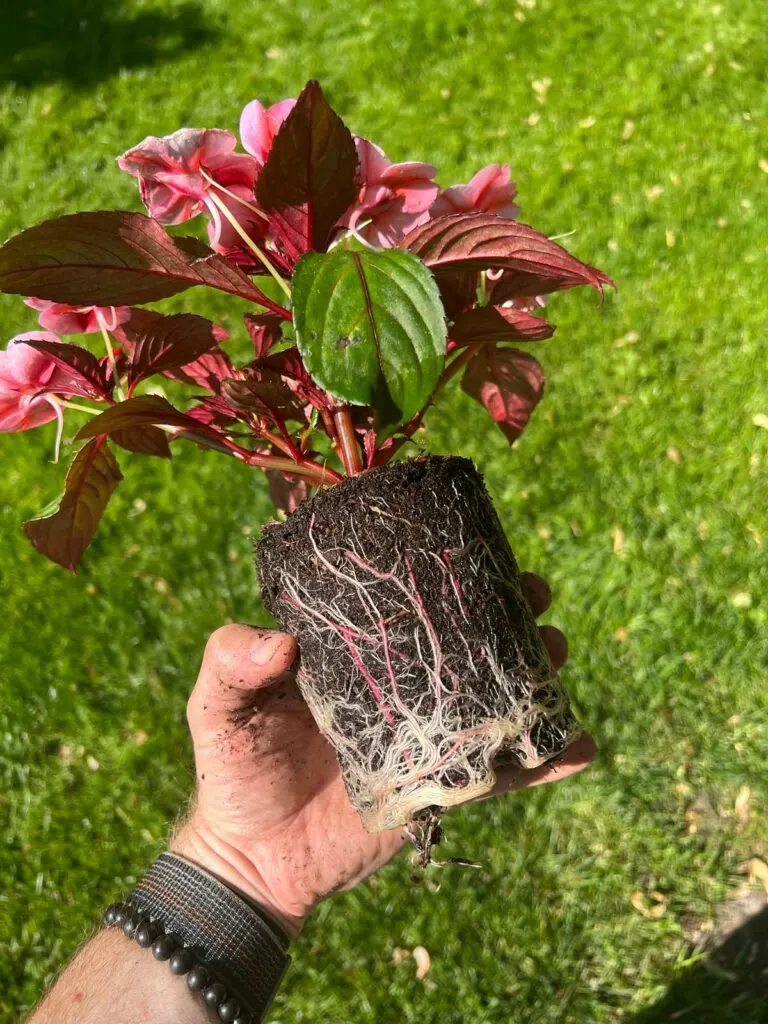
Just use your hands to loosen the bottom and sides of the root ball. Don’t go crazy, but don’t worry if you break a few roots. You will only make it easier for the plant to start growing new roots into the potting mix.
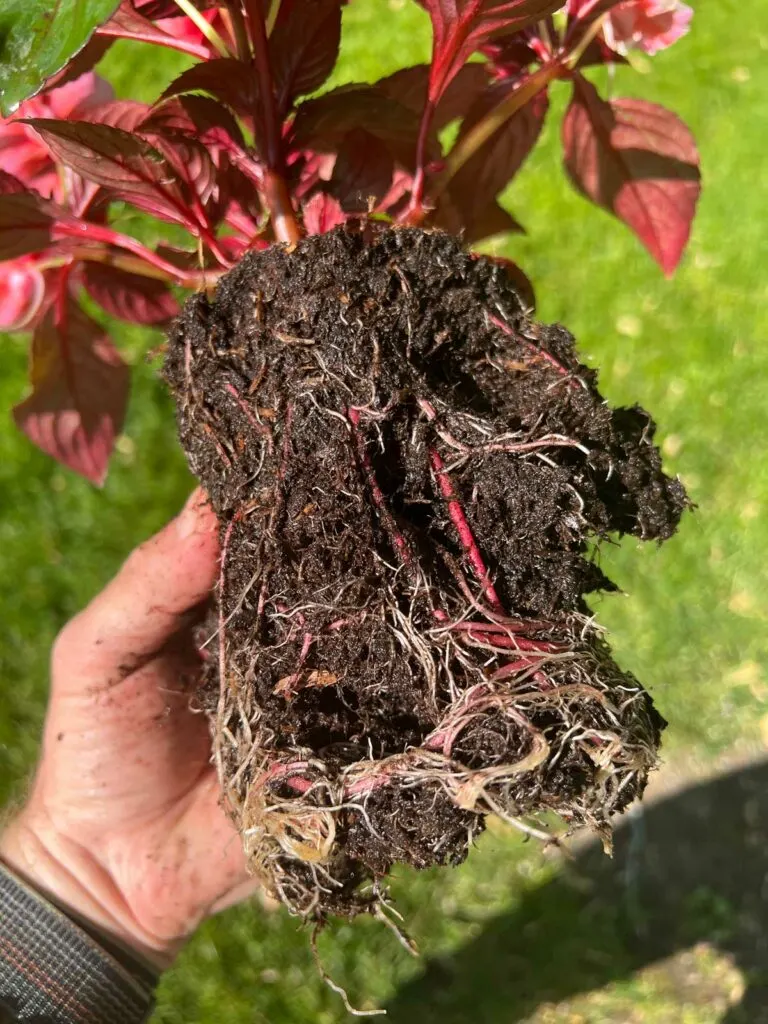
3. WATERING
All impatiens types like an evenly moist soil, and these plants detest drying out completely. Being consistent with your watering routine is the best thing that you can do for your impatiens.
As soon as the surface of the potting mix feels dry, you should water.
In warm weather, particularly during periods of high temperatures in summertime, you’ll probably have to water daily. During periods of cooler temperatures, it will be less frequent.
Just touch the surface of the potting mix. If the surface feels dry, go ahead and water. If it still feels damp, you can hold off another few hours or another day before you check again.
Also, impatiens have a shallow root system, so keep a close eye on watering. If your soil has dried out and you start to see your plants wilt, water them immediately. These are NOT drought tolerant plants!
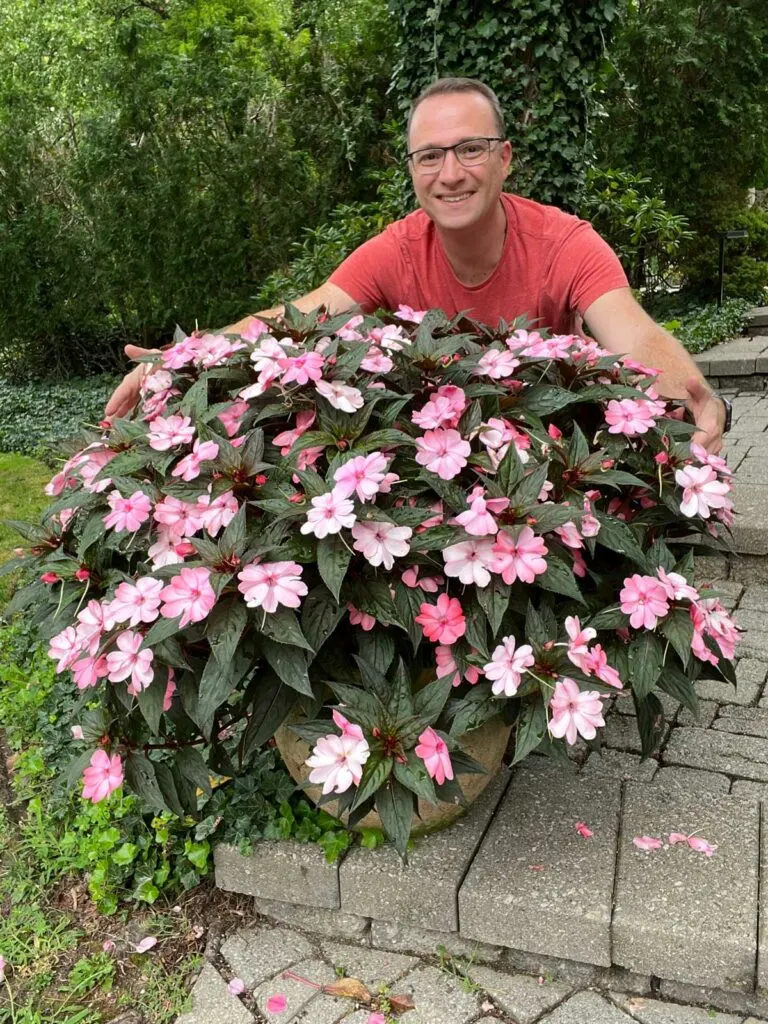
4. TEMPERATURE
Impatiens are tender perennials, but most of us treat them like annuals because cold temperatures and frost will kill them. If you live in a cold-winter climate, don’t be too eager to plant your impatiens as these tropical plants are quite tender.
To get a rough idea of when you can plant in your area, you can enter your zip code into the Farmer’s Almanac Frost Date Calculator. It will tell you both the first frost date, as well as the last frost date for your region.
The important one that you want is the last frost date, which represents the average date of the last light freeze in the Spring.
Use this date with a grain of salt, however. Even after the danger of frost has passed, you’ll also want to wait until the minimum nighttime temperatures are consistently above the 45°-50°F range before planting them.
Keep an eye on your extended forecast to help you determine when to plant.
If you plant too early with cold temperatures for extended periods of time, you may end up stunting your plants. Once temperatures warm up, impatiens grow quickly, so have some patience because it will pay off!
If you’ve purchased your plants and you are anticipating a late spring frost in your area, move them to a protected, warm place such as a garage overnight.
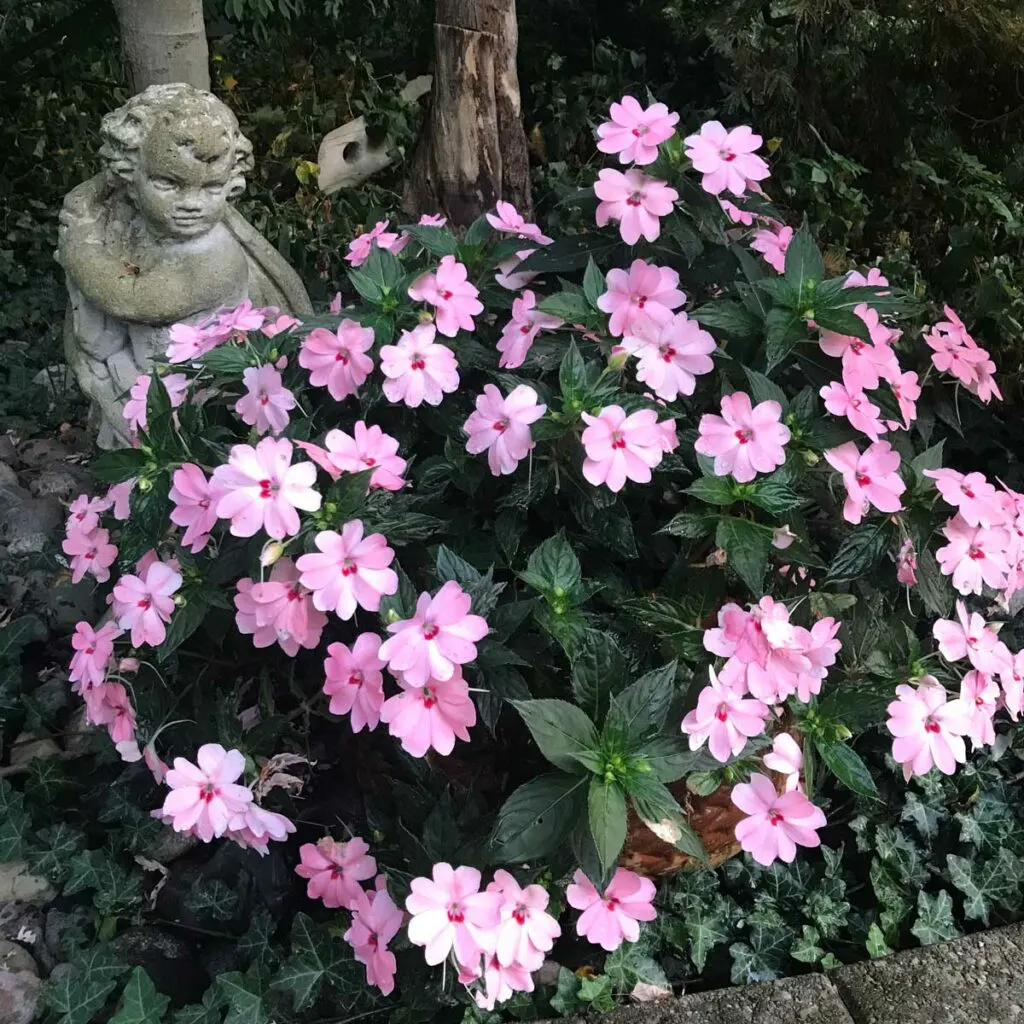
5. FERTILIZING
When I pot up my impatiens, I also like to mix in a slow-release fertilizer like Osmocote (link to Amazon) into the potting mix.
And throughout the growing season, I also will regularly also add a good water-soluble fertilizer, like Miracle-Gro Bloom Booster, on a weekly basis.
This may seem like a lot, but it’s not. Your plants will grow huge and bloom like crazy.
If you’re not a fan of Miracle-Gro fertilizer, you can also use an organic liquid fertilizer like a fish emulsion and kelp fertilizer. These tend to be stinky, but they’re great to use outside!
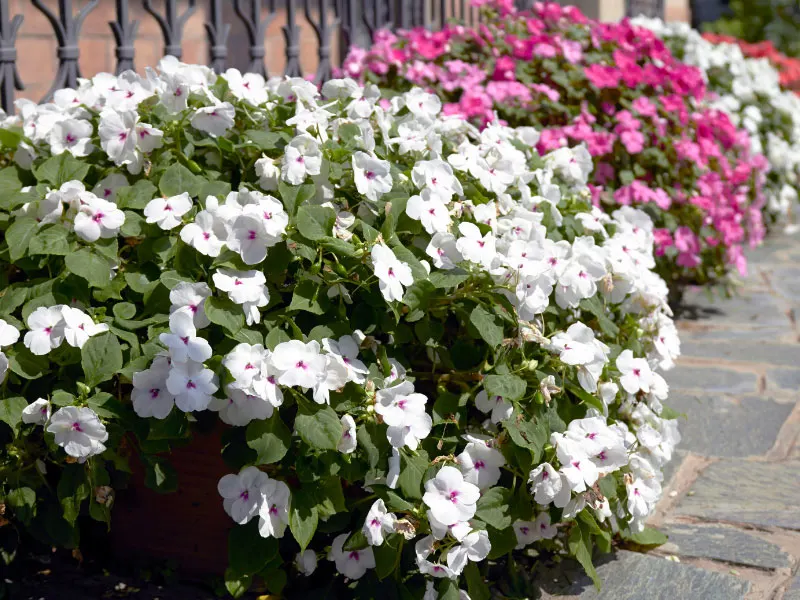
FREQUENTLY ASKED QUESTIONS
HOW MANY IMPATIENS TO PLANT IN A POT?
If you are planting only impatiens in a pot by themselves, a rough rule of thumb to use is one plant for every 2 inches of pot diameter. So for a 10-inch diamter pot, you can use 5 plants. For a 12-inch diameter pot, you can use 6 plants.
This works well when you’re planting impatiens that you purchased in flats and are smaller.
If you are starting out with larger plants in smaller pots, you may have to use less.
ARE IMPATIENS BETTER IN THE GROUND OR POT?
It’s really personal preference, but it’s easier to control the soil quality in a pot, versus trying to amend bad soil in the ground.
Because you can control both the soil as well as moisture levels more easily in a pot, it will be easier to grow impressive specimens with container-grown plants.
HOW COLD CAN IMPATIENS TOLERATE
Impatiens need warm temperatures, but they can tolerate cold temperatures for brief periods of time. They will die if temperatures get to freezing or if there is a frost.
HOW DO YOU PROPAGATE IMPATIENS IN WATER?
For a step by step account, with photos, check out my post on how to propagate impatiens in water.
I hope you’ve enjoyed this post on how to grow impatiens in pots. Do you enjoy planting impatiens? Comment below. I’d love to hear!
You may also enjoy my post on plants that bloom all summer in your garden. You CAN be with nonstop blooms!

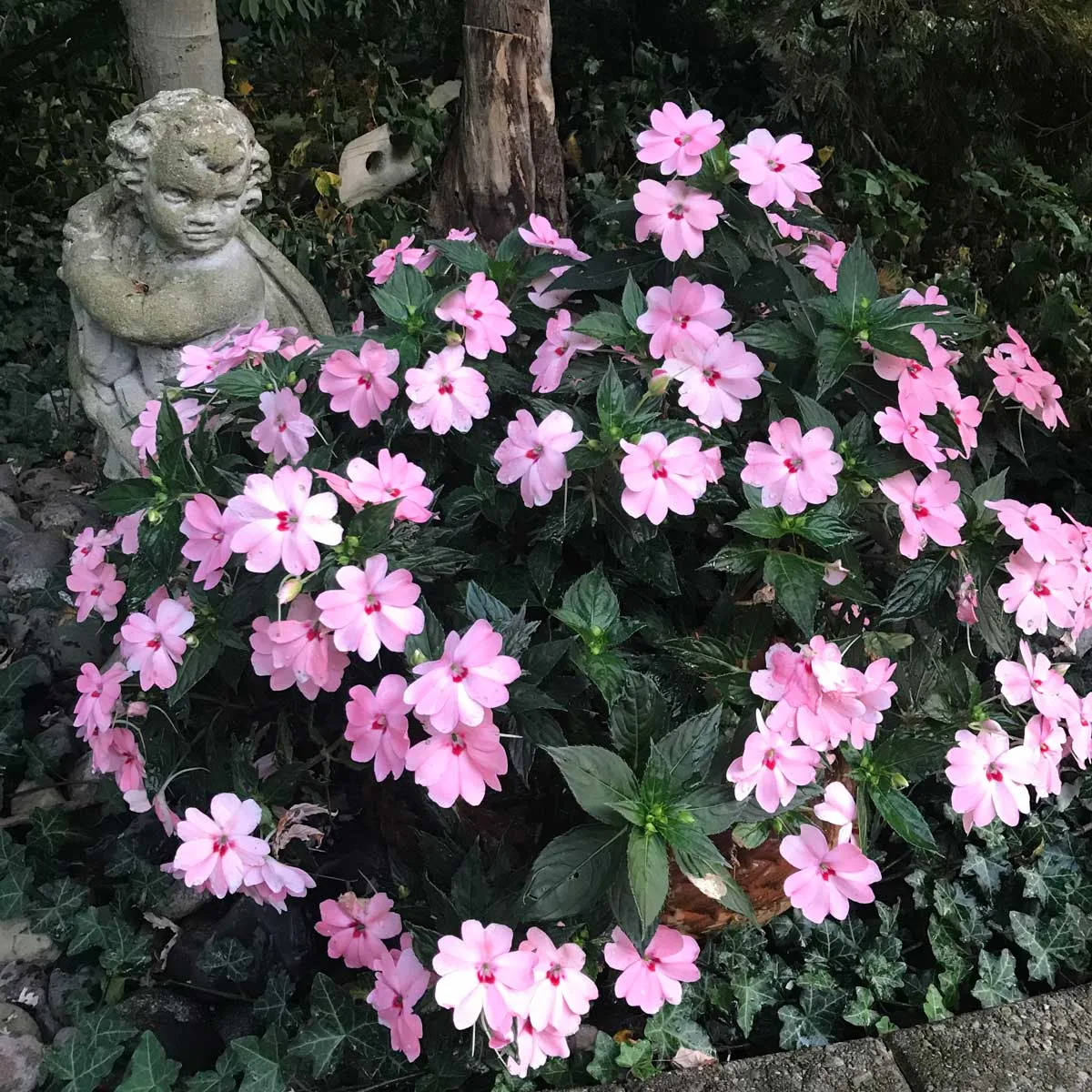
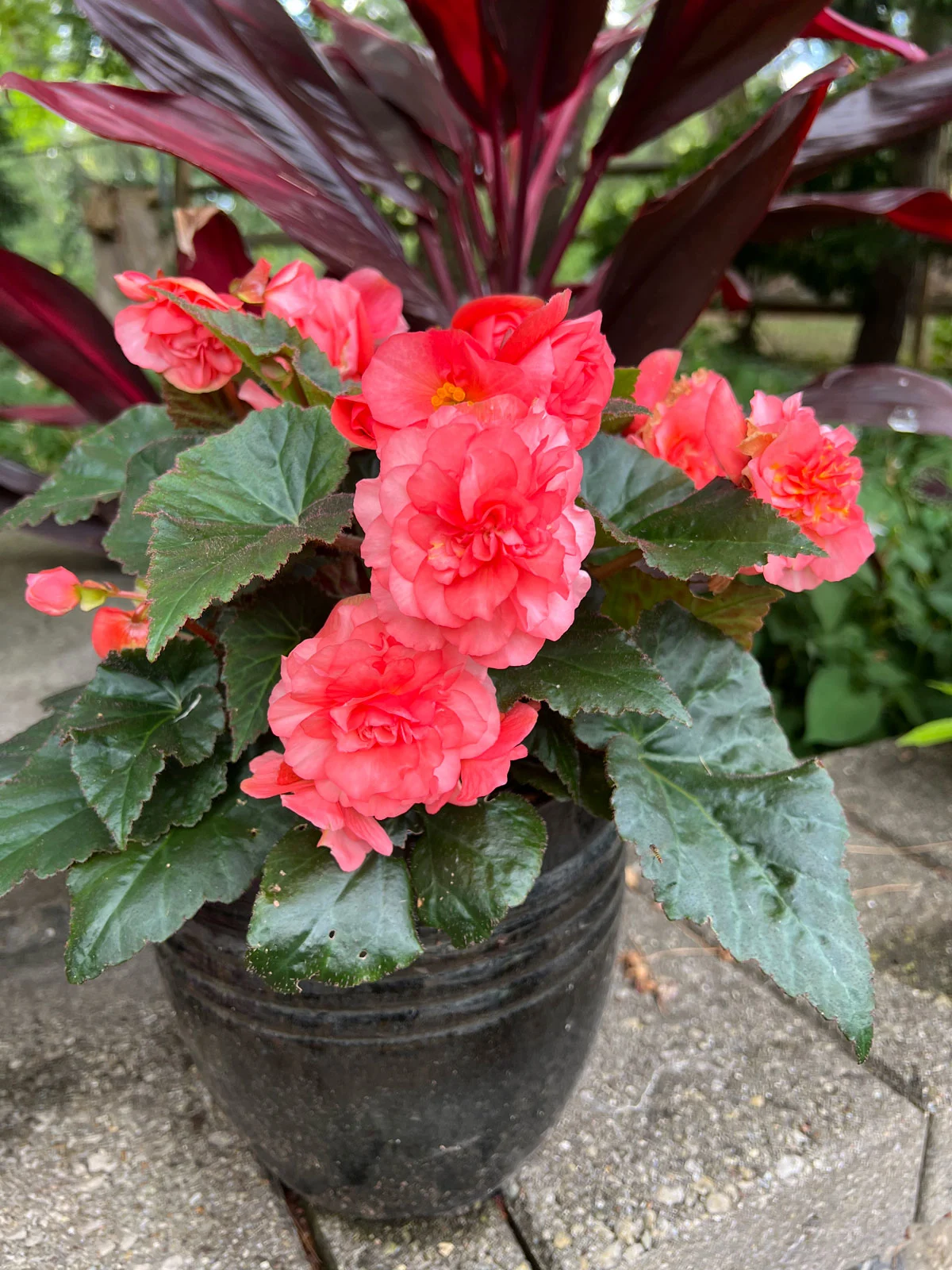
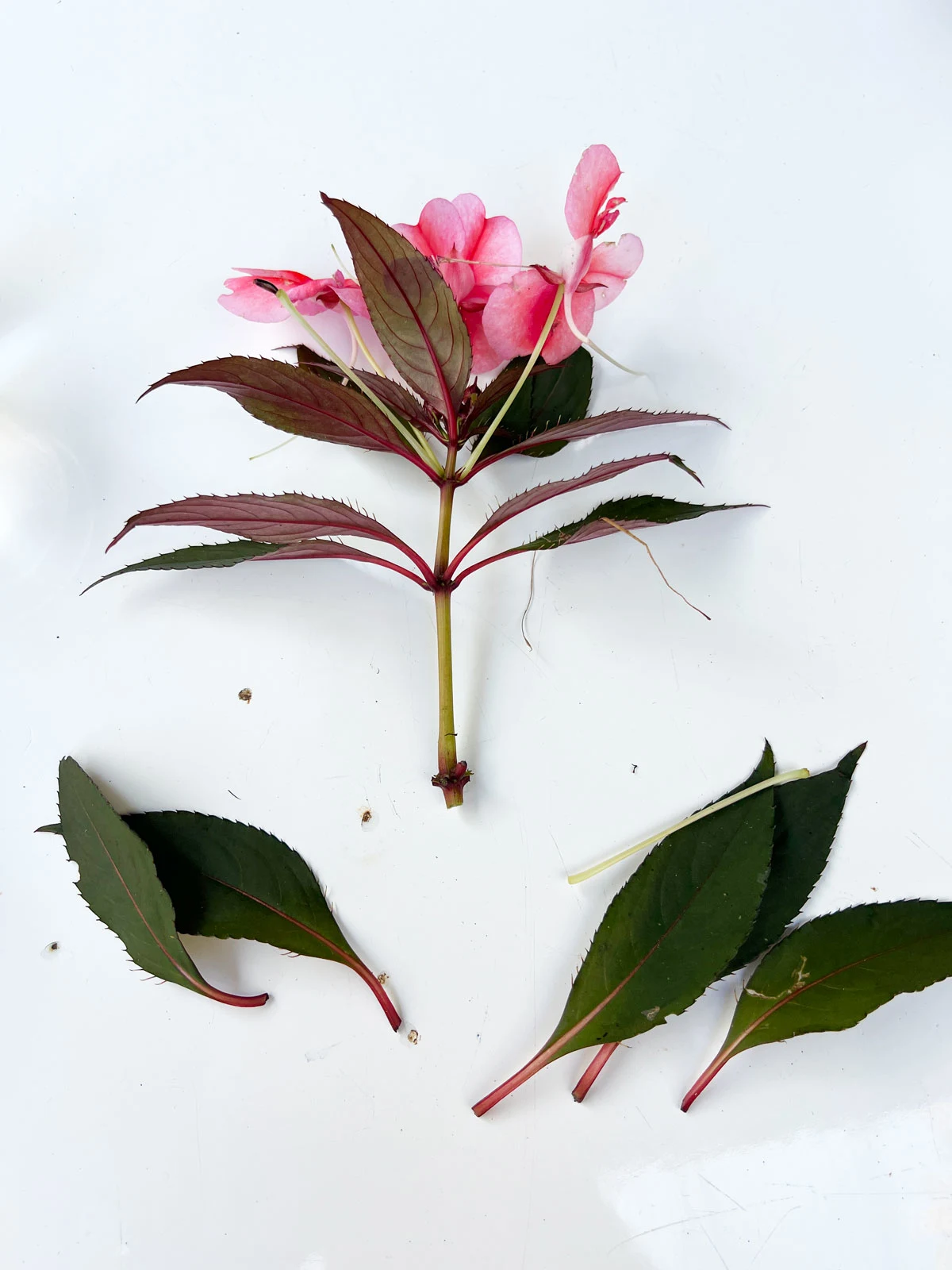
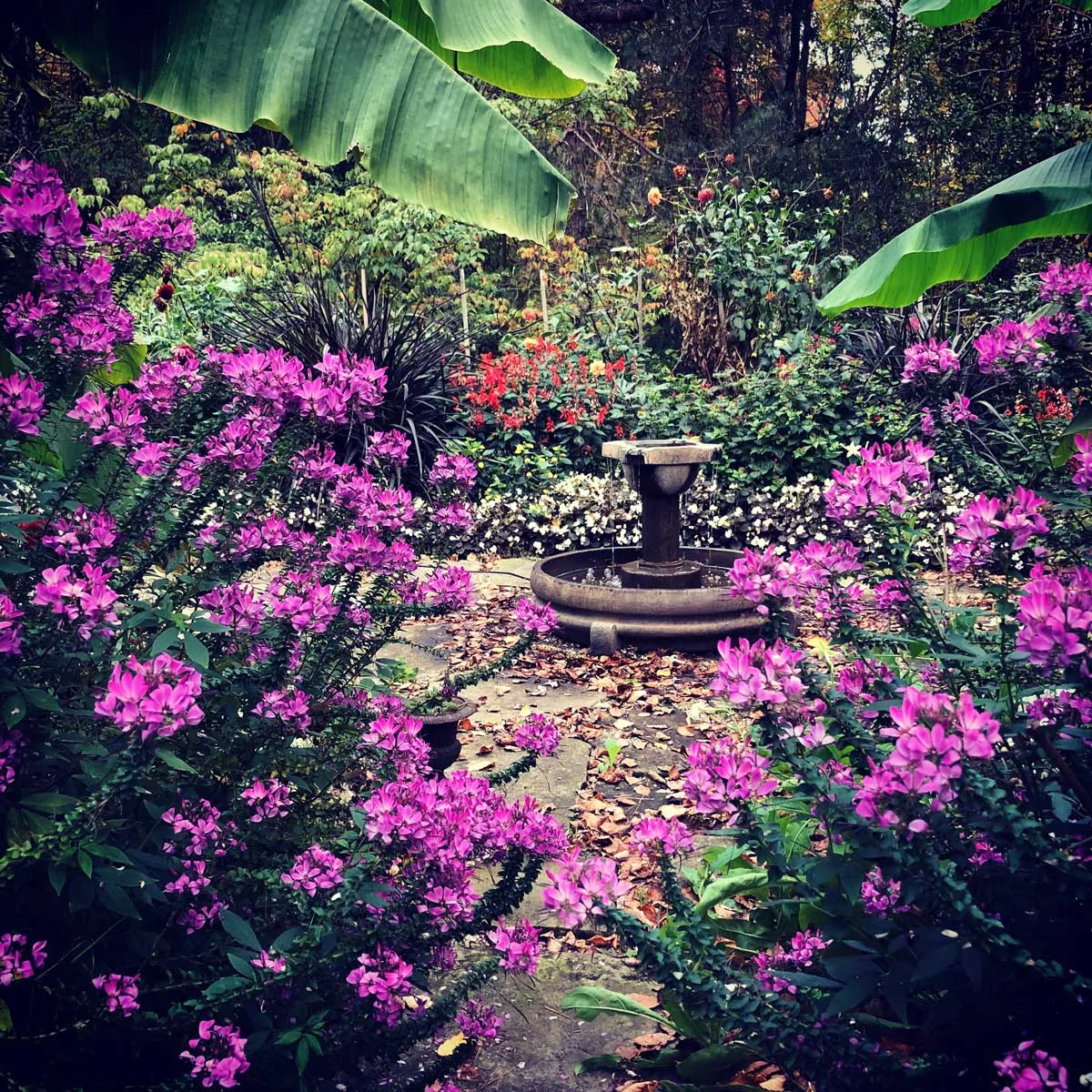
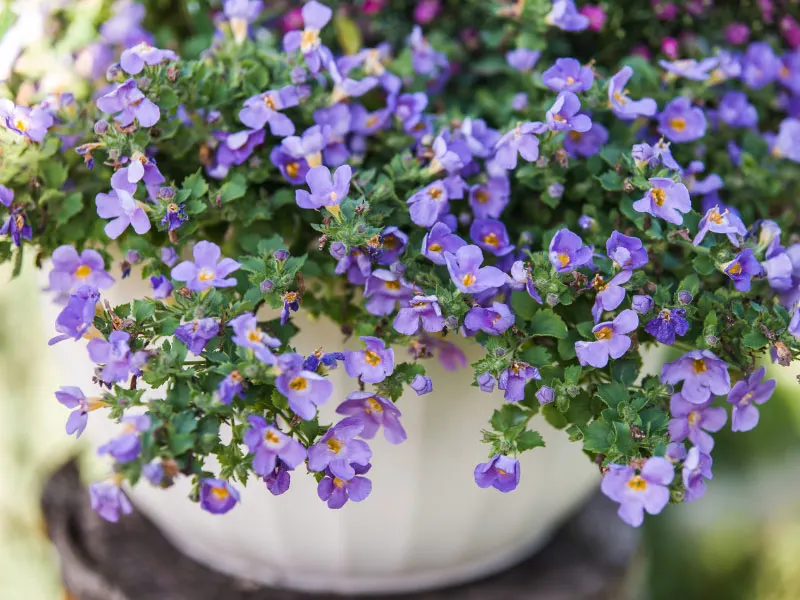
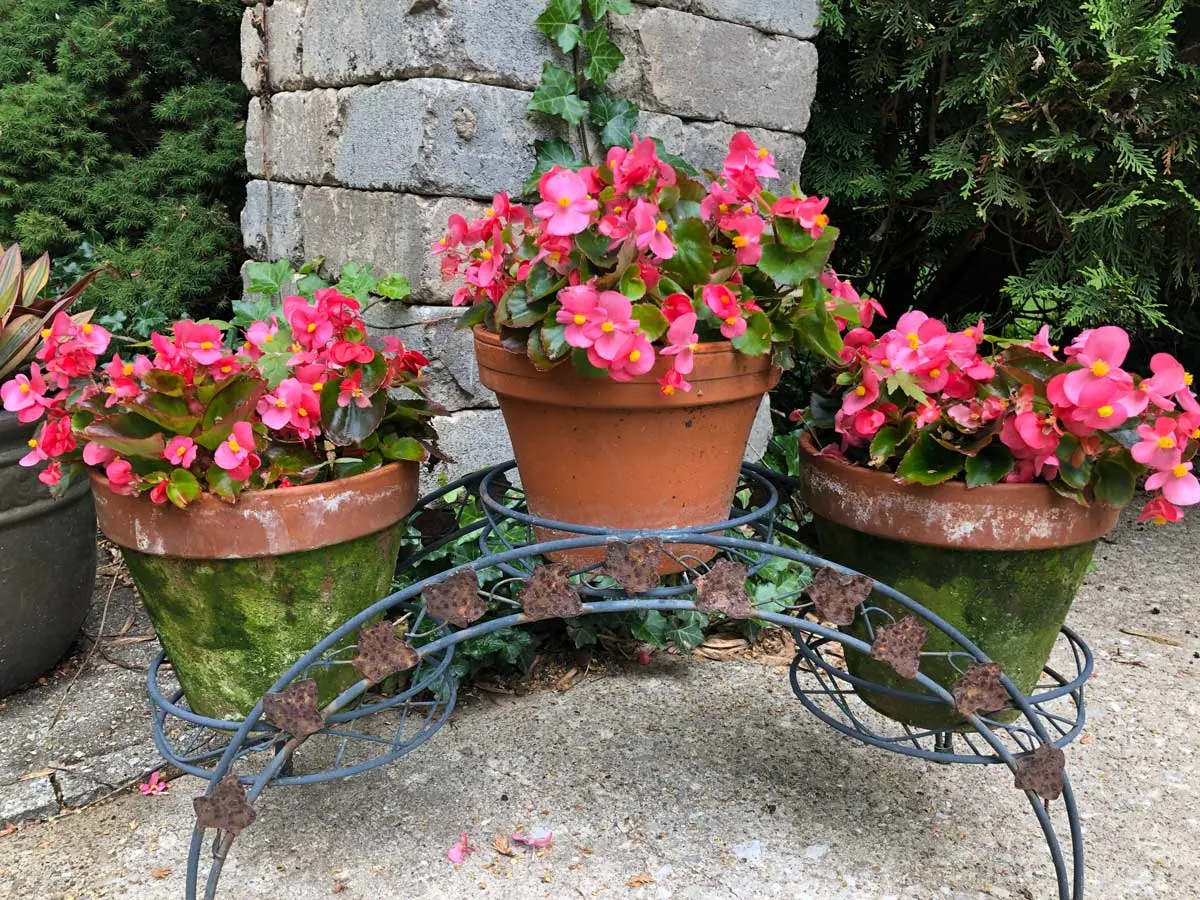
Sue
Thursday 5th of October 2023
Will my sun impatients grow if I leave them in the plastic pot from the nursery
Raffaele
Thursday 5th of October 2023
It's best if you transplant into a bigger pot. Chances are that it's really root bound in the nursery pot and it won't grow well there long-term.